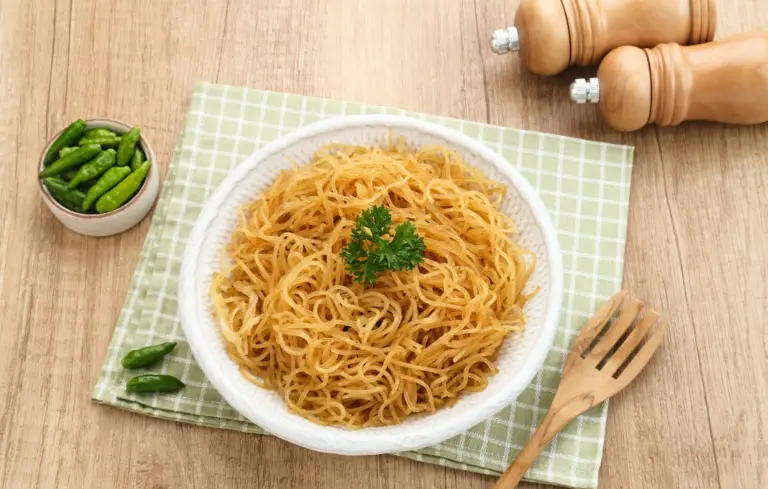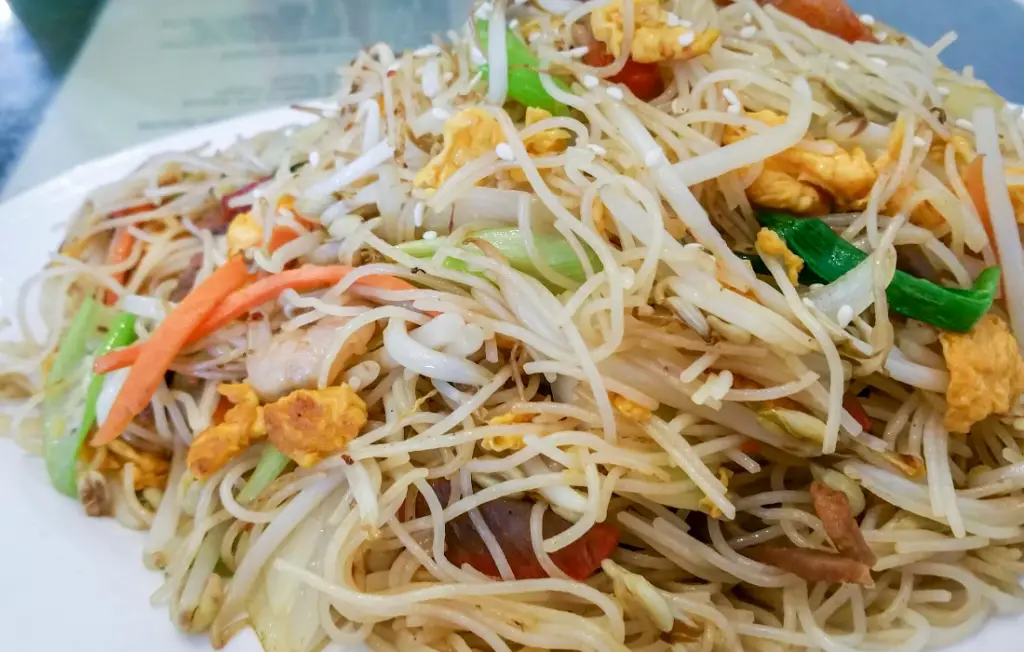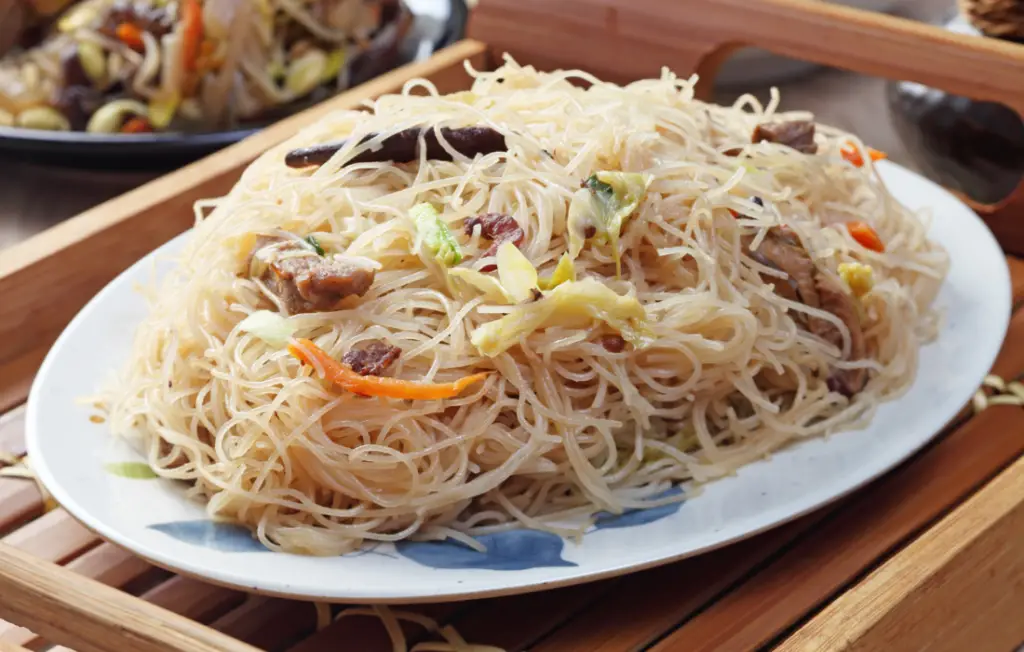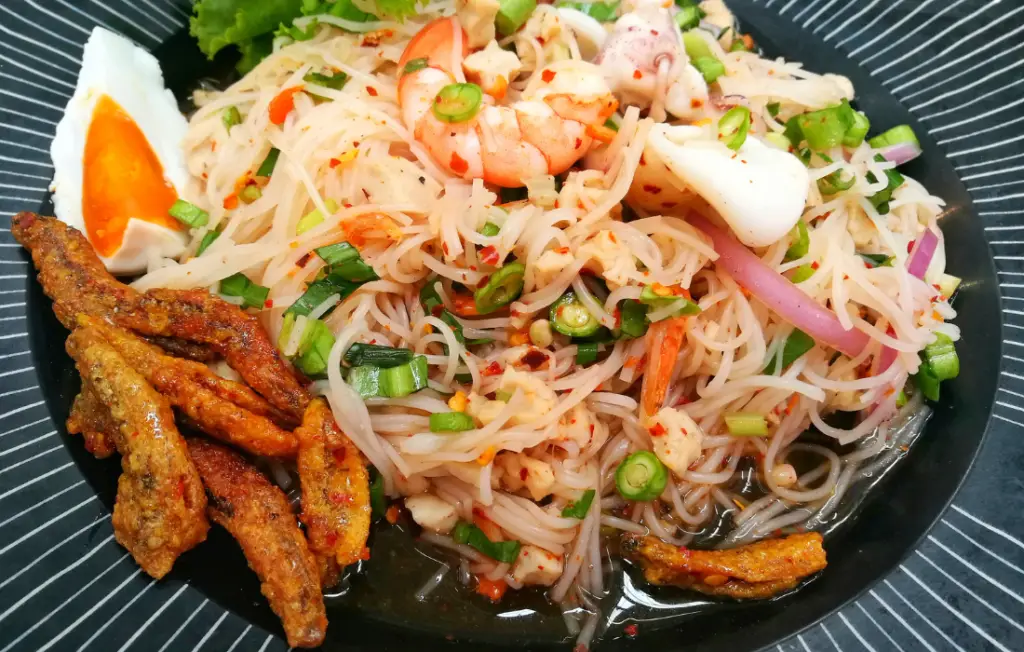Roasting vermicelli noodles may seem like a culinary challenge, but with the right guidance, you’re just moments away from a delightful dish. What’s the secret to perfectly roasted vermicelli noodles? Let’s unlock the answers together.
To prepare roasted vermicelli noodles, you’ll first need to gather your ingredients: a package of vermicelli noodles and a drizzle of oil. The preparation involves lightly toasting the noodles in a pan over medium heat until they are golden brown, which should take about 5 to 7 minutes. Once toasted, they can be cooked in boiling water or broth for another 5 to 7 minutes until they are soft, making the overall cooking time approximately 10 to 15 minutes.
In this comprehensive guide, we will delve into the versatile world of vermicelli, equipping you with expert tips, detailed steps, and insightful knowledge on how to roast vermicelli noodles to perfection. From understanding the basics to pairing it with the right ingredients and beverages, this guide aims to elevate your culinary experience and inspire your kitchen adventures.
- A Simple Guide to Roasting Vermicelli Noodles Perfectly
- Step by Step Instructions to Roast Vermicelli
- Got Leftover Roasted Vermicelli? No Problem!
- Elevate Your Dish – Complementing Roasted Vermicelli
- “Toasty” Troubleshooting Tips
- Vermicelli vs Rice Noodles: A Noodly Showdown
- Best Vermicelli Brands on Amazon
- Frequently Asked Questions
- Wrapping Up the Vermicelli Venture
A Simple Guide to Roasting Vermicelli Noodles Perfectly
Cooking something new can sometimes feel like navigating a maze without a map. But fear not! When it comes to roasting vermicelli noodles, we’ve got the secret map etched on a kitchen napkin. So let’s get down to it.
Ingredients and Tools Needed
What you’ll need for this culinary adventure is pretty straightforward. Grab a packet of your preferred vermicelli noodles, some oil (olive oil works great), a non-stick frying pan, and a wooden spatula for stirring. And voila! You’re all set for the expedition.

Step by Step Instructions to Roast Vermicelli
- First things first, put that frying pan on medium heat and let it get all warmed up. Now, we play a little waiting game. Once it’s hot, drizzle some oil onto it.
- Next, tip in your vermicelli noodles. Here’s where the magic happens. Stir them around with the spatula to make sure they’re all coated with the oil. This part is like a little noodle spa treatment.
- Keep them moving in the pan, and you’ll start to notice a color change. That’s them turning into golden strands of deliciousness. The process should take about 5-7 minutes. Remember, patience is the key.
- Once they’re all nice and golden, you can proceed with your recipe. Maybe a soup, perhaps a stir-fry. The world is your vermicelli.
Remember, practice makes perfect, and every chef has a first time. So, tie on your apron, grab that spatula, and show those vermicelli noodles who’s boss!
Got Leftover Roasted Vermicelli? No Problem!
If you’ve found yourself with leftover roasted vermicelli, you’re in for a treat. Vermicelli, due to its versatility, can be turned into a variety of delicious meals with just a bit of creativity.
Storing Leftover Roasted Vermicelli
First off, let’s talk about storing these golden strands of deliciousness. Place your leftover roasted vermicelli in an airtight container and refrigerate. It can stay fresh for up to 4-5 days, giving you plenty of time for some delicious reimaginations.
Using Leftover Roasted Vermicelli
Leftover vermicelli can be transformed into a quick stir-fry, added to soups, or even used to whip up a delicious noodle salad. They can be reheated quickly in a pan or microwave, and they blend beautifully with a variety of sauces, veggies, and proteins.
So next time you have leftover roasted vermicelli, think of it as an invitation to a culinary adventure rather than a dilemma. Let your imagination run wild, and enjoy the convenience and versatility of this humble noodle!
Print
Roasted Vermicelli Noodles
A delightfully simple dish, these roasted vermicelli noodles offer a unique twist to the traditional preparation. They’re golden, crispy, and full of rich flavor, making them the perfect base for a range of meals.
- Total Time: 20 minutes
- Yield: 2 servings 1x
Ingredients
- 1 cup of Vermicelli noodles
- 2 tablespoons of Olive oil
- 1 teaspoon of Salt
- 4 cups of Water (for boiling)
Instructions
- Heat a pan on medium heat and add the olive oil.
- Add the vermicelli noodles to the pan and roast until they turn golden brown. Stir frequently to prevent them from sticking together.
- Once roasted, boil water in a pot and add the roasted vermicelli. Cook for about 5 to 7 minutes, until they’re soft but not mushy.
- Drain the water and rinse the noodles with cold water to stop the cooking process. Your roasted vermicelli noodles are now ready to serve or use in other dishes.
Notes
Vermicelli noodles can absorb the flavors of any dish, making them incredibly versatile. Feel free to toss them in your favorite sauce or add them to soups, salads, or stir-fries.
- Prep Time: 5 minutes
- Cook Time: 15 minutes
- Category: Main Course
- Method: Roasting & Boiling
- Cuisine: Global
Elevate Your Dish – Complementing Roasted Vermicelli
They say variety is the spice of life, and this couldn’t be truer when it comes to the humble vermicelli noodle. Whether you’re a sauce boss or a global cuisine enthusiast, these golden strands are your perfect canvas.
Best Sauces for Vermicelli Noodles
When it comes to choosing a sauce for your roasted vermicelli, you’re spoilt for choice.
- Soy and Sesame Sauce: This classic Asian duo brings a delightful balance of salty and nutty flavors, making your noodles taste like they just returned from a culinary trip to the East.
- Tomato and Basil Sauce: Taking a page out of the Italian cookbook, a simple tomato and basil sauce gives your vermicelli a Mediterranean twist.
- Coconut Curry Sauce: Add a bit of heat and creaminess with a savory coconut curry sauce. It’s like a warm, comforting blanket for your noodles.
Choose according to your palate’s preference or the kind of culinary adventure you’re up for!
Popular Vermicelli Dishes Worldwide
Vermicelli has been embraced by cultures across the globe, each bringing their unique twist to this versatile ingredient.

- Vermicelli Upma from India: A savory breakfast dish, spiced with mustard seeds, turmeric, and green chillies, and laden with vegetables.
- Rice Vermicelli Salad from Vietnam: This refreshing dish, also known as Bun, is a mix of fresh veggies, herbs, roasted peanuts, and a tangy fish sauce.
- Seviyan Kheer from India: A creamy dessert made by cooking roasted vermicelli in sweetened milk, flavored with cardamom and garnished with dry fruits.
- Fideo from Mexico: Vermicelli noodles are toasted and cooked with tomatoes, onion, and chicken broth, making for a hearty soup or side dish.
The common thread among these diverse dishes? The ever-versatile roasted vermicelli noodle. So go on, let your kitchen be a global stage for this culinary superstar!
“Toasty” Troubleshooting Tips
As with all things in life, sometimes roasting vermicelli can go a little haywire. But don’t fret! Here are five common mistakes that can happen when roasting vermicelli and their simple solutions:
Mistake 1: Vermicelli Sticking Together
Solution: Vermicelli can be a bit clingy when it’s heated. Make sure to stir the noodles continuously during roasting to keep them from forming a noodly mass.
Mistake 2: Vermicelli Burning
Solution: Burnt noodles can turn your kitchen symphony into a culinary cacophony. Keep your heat at medium and stay vigilant, stirring frequently. Remember, we’re aiming for a golden tan, not charcoal black.
Mistake 3: Vermicelli is Too Hard
Solution: If your roasted vermicelli is giving your jaw a workout, it’s likely undercooked. Once roasted, make sure to cook them in boiling water or broth for 5 to 7 minutes until they’re soft.

Mistake 4: Vermicelli is Soggy
Solution: If your vermicelli has gone from crisp to limp, you’ve overcooked it. After boiling, immediately drain the noodles and rinse with cold water to halt the cooking process.
Mistake 5: Vermicelli Lacks Flavor
Solution: Remember, vermicelli is like a sponge for flavors. Don’t be shy to toss it in a flavorful sauce or broth. A dash of salt while roasting can also enhance the overall taste.
Remember, practice makes perfect. With these tips in hand, you’re well on your way to mastering the art of roasting vermicelli. Happy cooking!
Vermicelli vs Rice Noodles: A Noodly Showdown
When it comes to noodles, the variety can sometimes make your head spin. Today, we’re putting two popular contenders in the ring: Vermicelli and Rice Noodles. Both are champions in their own right, but let’s look at how they stack up against each other.
Table:
| Vermicelli | Rice Noodles | |
|---|---|---|
| Origin | Primarily associated with Italian cuisine but also popular in Asian and Middle Eastern dishes | Originated from China, but widely used in various Asian cuisines |
| Texture | Usually thin and slightly harder than rice noodles | Soft, slightly chewy |
| Cooking time | Requires a longer cooking time due to its hardness | Cooks quickly, and often just requires soaking in hot water |
| Flavor | Mild flavor, works well in absorbing the flavors of sauces and broths | Mild flavor, good at soaking up the flavors of accompanying ingredients |
| Gluten Content | Traditional Italian vermicelli contains wheat, thus has gluten. However, Asian vermicelli varieties like those made from rice or mung beans are gluten-free | Gluten-free, as it’s made from rice flour |
| Nutritional Value | Lower in calories and carbs than rice noodles (varies by type) | Higher in carbs and calories than vermicelli |
So, whether you’re team Vermicelli or team Rice Noodle, it’s clear that both bring something unique to the table. Choose according to your taste, dietary preferences, or the kind of dish you’re preparing. And remember, there are no losers in the world of noodles!
Best Vermicelli Brands on Amazon
Frequently Asked Questions
In our journey through the world of vermicelli, some questions pop up more often than others. Let’s address those to clear up any noodly confusion.
Is Vermicelli Vegan?
Yes, vermicelli is typically vegan. It’s made from either semolina or durum wheat in its traditional Italian form, or from a variety of other ingredients like rice or mung beans in Asian cuisines. However, always check the packaging for any additional ingredients, just to be sure.
Gluten-Free Vermicelli Options (Tone: Professional & Informative)
While traditional Italian vermicelli contains wheat, Asian varieties offer gluten-free options. Vermicelli made from rice, mung beans, or potato starch are all gluten-free alternatives that you can enjoy.
How to Soften Vermicelli Noodles?
If you’re dealing with dried vermicelli, you can soften them by soaking in warm water for about 5 to 10 minutes. After soaking, they’re ready to be added to your pan or pot for further cooking.

How to Cook Dried Vermicelli Noodles?
After soaking dried vermicelli to soften them, drain the water and add the noodles to boiling water or broth. Cook for about 5 to 7 minutes, until they’re soft and have absorbed the flavors.
How to Cook Vermicelli Perfectly?
The trick to perfect vermicelli is to first roast them until golden, then boil them until they’re soft but not mushy. This ensures a delicious flavor and just-right texture. Patience and constant stirring are key in this process.
How Much Water Do You Add to Vermicelli?
When boiling vermicelli, you’ll want to use enough water to completely submerge the noodles. Typically, a good ratio is 1:2, one part vermicelli to two parts water. However, the exact amount may vary based on the quantity of noodles and the specific recipe you’re following.
Remember, every culinary adventure comes with a few questions. The key is to keep exploring, experimenting, and most importantly, enjoying the journey!
Wrapping Up the Vermicelli Venture
There you have it, noodle enthusiasts! Now you’re well-equipped to embark on your very own vermicelli voyage. From roasting these delicate strands perfectly, dodging common noodle pitfalls, to pairing them with a bevy of delectable sauces and global dishes, you’ve got the roadmap to vermicelli victory in your hands.
Don’t forget that cooking is about joy, experimentation, and sharing great food. So whether you’re whipping up a vermicelli feast for a crowd, or savoring a quiet bowlful on a cozy night in, remember to enjoy the journey as much as the destination.
And remember, in the grand culinary stage, there’s always a role for vermicelli to play. So, happy cooking, and here’s to many delicious noodle-laden adventures to come!

